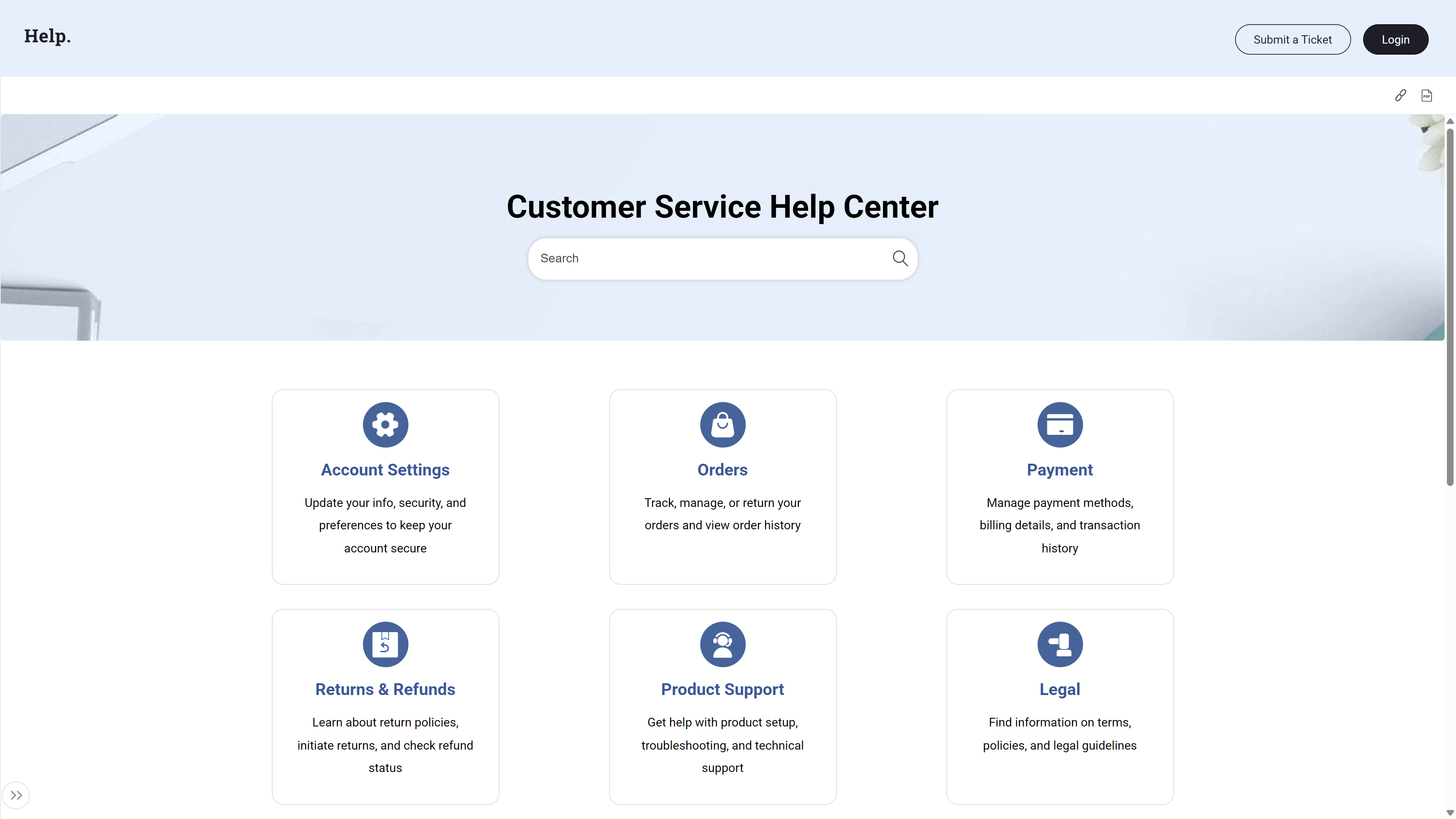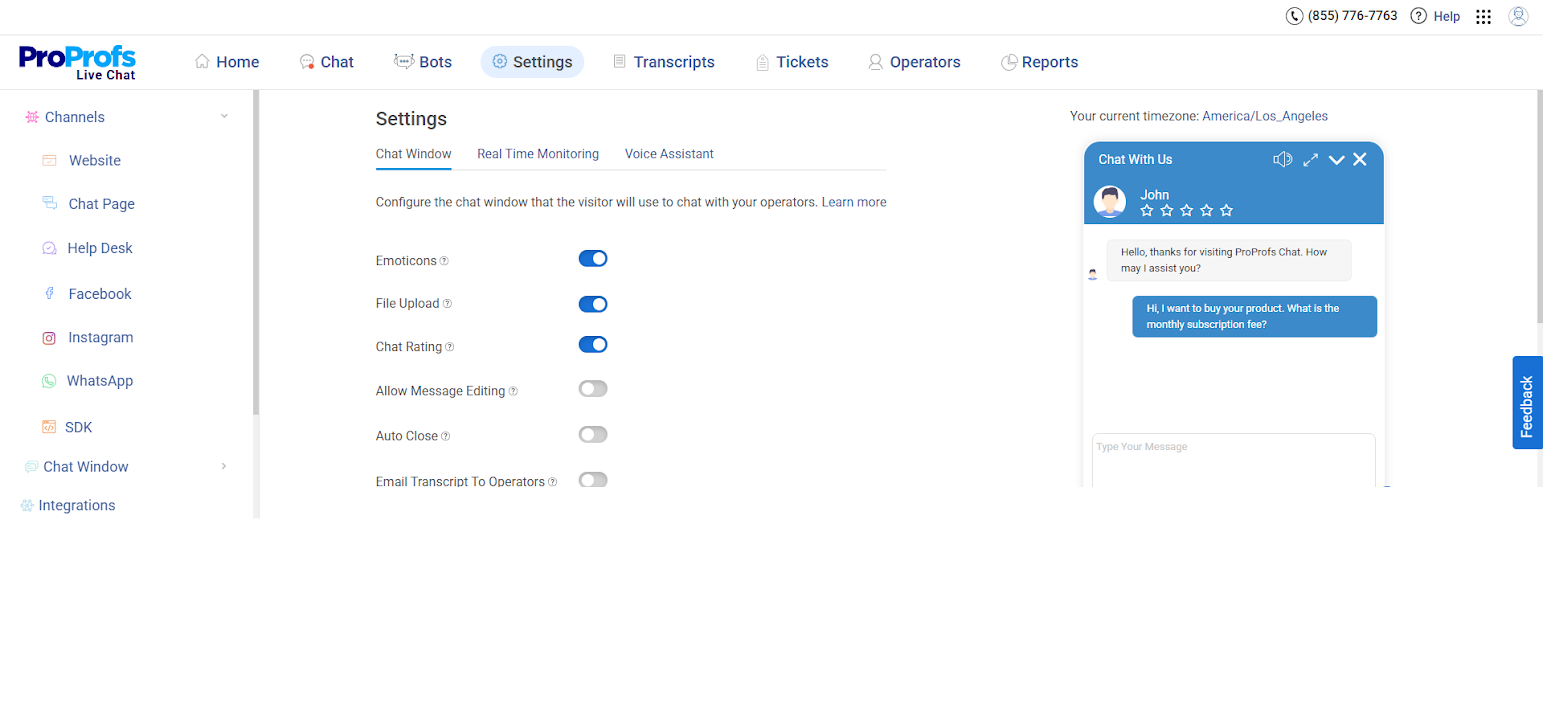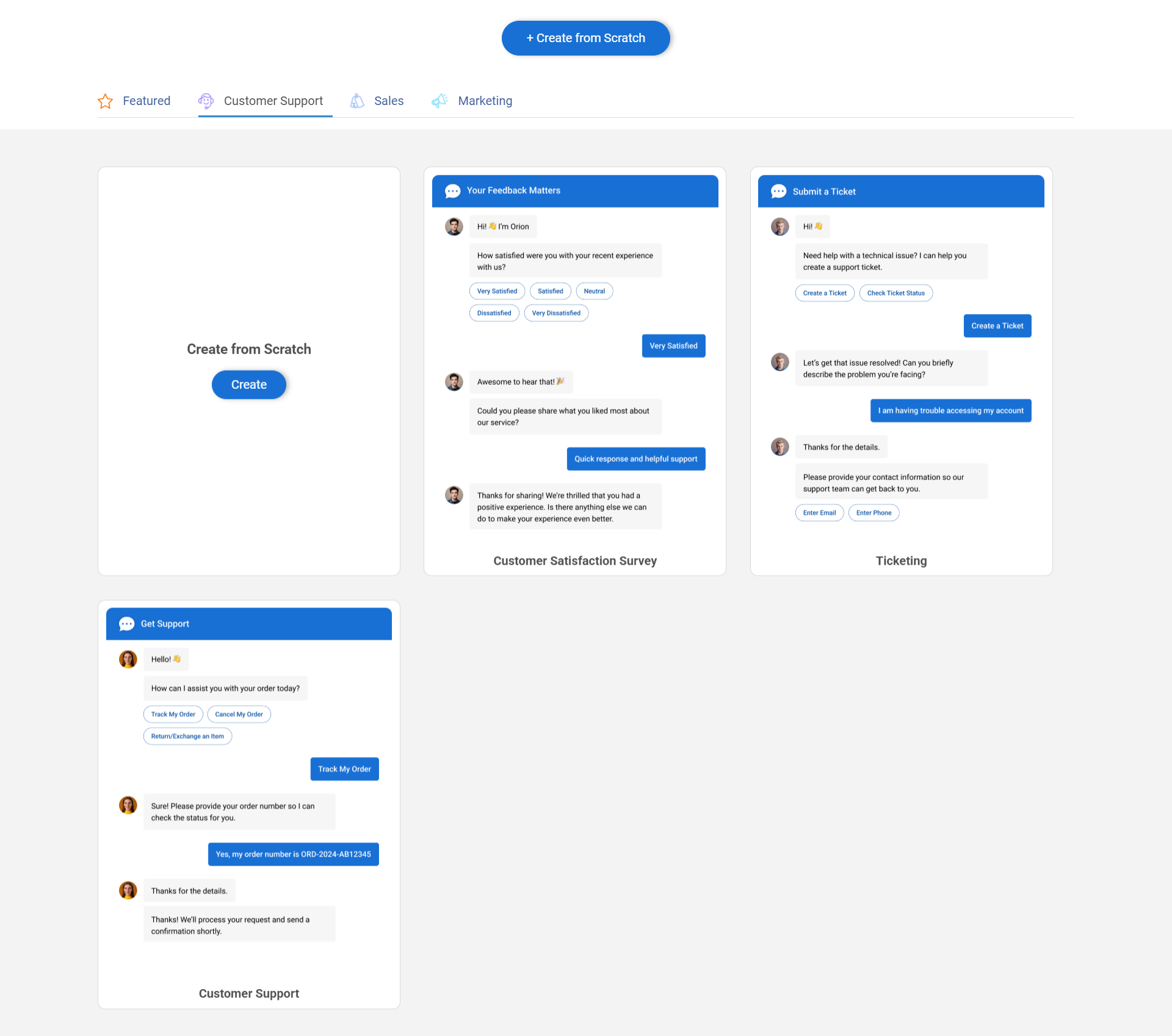Modern customers don’t just want fast responses; they expect omnichannel customer support—seamless assistance across live chat, email, social media, and self-service platforms.
If they start a conversation on your website and follow up via Twitter or phone, they expect your team to remember the context and continue right where they left off.
I’ve spent over a decade helping organizations build scalable support ecosystems that prioritize clarity, connection, and customer-first thinking. This isn’t theory, it’s a field-tested framework for building an omnichannel system that actually works.
Still, only 7% of contact centers offer multiple service channels that seamlessly transition customers between channels by providing data, history, and context to the following agent or system. This leaves a big gap to fill. This is what I’ll help you with in this guide.
What Is Omnichannel Customer Support?
Omnichannel customer support is a strategic approach that provides a seamless and integrated customer experience across all support channels.
Unlike multichannel support, where channels operate independently, omnichannel customer support ensures that all customer interactions are connected and contextualized, regardless of how or where they occur. This means the conversation history and customer information travel with the customer as they switch between channels.
For example, imagine a customer browsing an e-commerce site. They start a chat with a chatbot about a product. Later, they decide to call customer service with a follow-up question.
In an omnichannel support software, the agent answering the call would immediately see the previous chat transcript, know which product the customer was asking about, and pick up the conversation exactly where it left off, providing a smooth and efficient experience.
Let me show you a real-life example of how adding a Live Chat feature helped Lazy Cloud with multichannel customer support:

Why Omnichannel Customer Service is Essential (Key Pain Points & Solution)?
Many businesses grapple with customer support challenges that directly impact customer satisfaction and efficiency.
So, omnichannel customer support software is necessary for resolving these critical pain points and transforming customer interactions.
1. Customers Hate Repeating Themselves
No one enjoys explaining the same issue multiple times across different channels. It feels inefficient, impersonal, and downright annoying. When support systems are disconnected, agents have no context, and customers feel like just another ticket.
Solution:
Omni-channel support connects all interactions under one customer view, so agents can pick up right where the last channel left off, no repeats, no friction.
2. Inconsistent Experiences Damage Trust
A helpful live chat is quickly undone by a slow, unresponsive email thread or a tone-deaf reply on Twitter. Inconsistency across channels erodes customer confidence and makes your support feel unreliable.
Solution:
With an integrated omnichannel customer service software, you can ensure brand voice, tone, and resolution quality are consistent across all platforms, giving customers a seamless, professional experience.
3. Slow Support = Lost Business
Long wait times, slow email responses, and limited contact options cost more than customer satisfaction; they cost revenue. According to Salesforce, 89% of consumers have switched brands due to a poor experience.
Solution:
Omni-channel platforms reduce response time with intelligent routing, automation, and channel balancing, keeping support quick, efficient, and responsive where it matters.
How to Set Up an Omni-Channel Customer Service Process: A Step-by-Step Guide
Delivering modern customer support means meeting users where they are, on websites, mobile apps, social media, and beyond. But being present on every platform isn’t enough.
The real challenge is creating a connected, consistent experience across all channels. Here’s how to build omnichannel customer care that does exactly that.
1. Identify Customer Touchpoints & Prioritize Channels
Start by mapping your customer journey. Where do customers reach out the most: website chat, email, phone, social media, or mobile? Analyze support logs, web analytics, and direct feedback to identify these touchpoints.
Focus on the top 3–4 channels that account for the majority of support traffic or business impact. This approach ensures your initial efforts are strategic and manageable, while giving room to scale later.
2. Set Up Website-Based Customer Support
Your website is the face of your brand—and often the first stop when users need help. It must offer immediate and clear access to support.
Follow these simple steps to add live chat to your website:
Step 1: Copy the Code from Settings
Access and copy the chat code from your ProProfs dashboard.
Step 2: Add the Code to Your Website
Paste the code before the </body> tag, and you’re all set.
Implement:
- Live chat widgets to engage visitors in real time and guide them to answers or conversions.
- Support forms or ticket submission portals to capture more detailed issues.
- Website behavior analytics to identify where users are struggling—so you can deploy help where it’s needed most.
Ensure chat icons and help links are placed strategically across high-intent pages, like pricing, checkout, and FAQs.
Watch this video to see it happen:
3. Launch Tool-Based Customer Support Systems
Customer experience improves significantly when tools proactively support users based on their behavior.
Set up:
- AI Chatbots or live chat assistants that offer contextual help or escalate to a human when needed.
- Behavioral triggers based on page time, scroll depth, or exit intent to offer timely assistance.
Automation rules that route users to relevant knowledge base articles or initiate personalized messages based on actions.
These tools help reduce effort for the customer and give your agents a head start.
4. Integrate Social Media-Based Customer Support
Customers expect fast, human responses on social channels. Whether it’s a product question via Instagram DM or a public complaint on X (formerly Twitter), these touchpoints need real-time attention.
To manage them effectively:
- Use a social engagement dashboard to view and reply to comments, DMs, mentions, and tags from one place.
- Set alerts for high-priority keywords (like “refund” or “broken”) to detect and resolve issues quickly.
- Curate helpful social content—like feature tips, tutorial links, and support updates—to proactively assist users before they reach out.
This allows your brand to stay responsive and reputable in the public eye.
5. Enable Voice & Phone-Based Customer Support
Phone support remains critical for urgent or complex issues—especially in industries where users need personal reassurance.
Set up:
- Call management tools with features like IVR (interactive voice response), call logging, and routing by issue type or department.
- Equip agents with access to caller history, prior tickets, and notes so they can provide contextual support right from “hello.”
- Record calls (with permission) to assess quality, resolve disputes, and improve training.
Voice is powerful, but only when it’s integrated with your broader support system.
6. Build Self-Service: FAQ, Documentation & Video Support

Today’s customers prefer solving problems themselves—if the answers are easy to find and easy to follow.
Offer:
- A searchable, structured knowledge base with articles, SOPs, and step-by-step guides.
- A well-organized FAQ section based on top search queries and real customer questions.
- Short, helpful video walkthroughs demonstrating product setup, common workflows, or troubleshooting steps.
These resources deflect repetitive tickets, empower users, and reduce agent workload. Read this detailed guide to learn how to create a knowledge base.
7. Set Up Email-Based Customer Support
Email remains a cornerstone for customer service, especially for in-depth queries, attachments, and escalations.
Use:
- A help desk platform that turns emails into tickets, routes them to the right team, and tracks resolution times.
- Canned responses, automation rules, and internal notes to help agents work efficiently.
- A shared inbox that maintains transparency and prevents overlapping responses.
Centralizing email support also helps create a unified customer profile across all interactions.
8. Connect All Channels in One Unified Dashboard

Now that your channels are active, the key to omnichannel success is integration. Your team should never have to switch between disconnected tools or lose context between touchpoints.
Set up a centralized system that:
- Pulls customer history from every channel, chat, email, phone, and social—into one timeline
- Allows agents to respond from a single interface, regardless of where the request originated
- Tracks status, notes, and escalations across the board.
This ensures that every customer interaction is cohesive, fast, and personalized.
9. Train Support Agents Across Channels
Technology means nothing without trained people behind it. Even with the best systems, your support quality depends on how well your agents can navigate and communicate across multiple platforms.
Offer:
- Channel-specific training (e.g., tone for social media vs. email vs. phone)
- SOPs and checklists for handling escalations, switching between tools, and managing multiple conversations
- Ongoing refreshers and role-play exercises to keep skills sharp.
Great agent training = consistent support = happy customers.
10. Monitor, Analyze & Continuously Improve

An omni-channel setup is never truly “done.” Customer needs evolve, new channels emerge, and usage patterns shift over time.
Track key customer service metrics like:
- First response time (FRT) and average resolution time (ART)
- Channel-specific CSAT (Customer Satisfaction Score)
- Ticket deflection from self-service
- Agent productivity and performance.
Use this data to refine chatbot scripts, improve help articles, retrain staff, or adjust resource allocation between channels.
What Are the Core Pillars of an Ultimate Omni-Channel System?
An effective omnichannel customer support system isn’t just about being present on every channel; it’s about creating a unified, intelligent, and proactive experience across all touchpoints.
These five core pillars work together to deliver seamless, personalized support that keeps customers happy and loyal.
1. Unified Customer View
A truly connected support system begins with a centralized view of the customer. By integrating CRM, chat, email, and purchase history into a single interface, agents can see the full picture, past conversations, order status, preferences, and pain points.
This enables faster resolutions and more personalized interactions, eliminating the need for customers to re-explain themselves.
2. Seamless Channel Handoffs
Customers may start a conversation on chat and continue it via email or phone. Without proper context transfer, this leads to frustrating repetition and poor experiences.
Seamless handoffs ensure that when customers switch channels, their issue follows them, complete with conversation history, agent notes, and prior actions, so the experience remains continuous and coherent.
3. Empowering Self-Service
Customers increasingly prefer solving problems themselves. A strong omnichannel system offers smart self-service options, like searchable knowledge bases, well-structured FAQs, and AI-powered chatbots that provide instant answers to common questions.
This not only improves customer satisfaction but also reduces the load on support teams, allowing agents to focus on more complex issues.
4. Agent Enablement
Support agents are only as effective as the tools and training they’re given. An intuitive, unified dashboard, access to real-time customer data, and clear process flows empower agents to respond quickly and confidently.
Combined with scenario-based training and automated suggestions, agents can deliver consistent, high-quality service regardless of the channel.
5. Proactive Engagement
The best support isn’t reactive, it’s proactive. By leveraging behavioral data, purchase history, and interaction trends, businesses can anticipate customer needs and offer timely help before issues escalate.
Think of it as support that shows up before you ask, like a chatbot offering help when a user hesitates on the checkout page or a notification reminding a customer about an unresolved ticket.
FREE. All Features. FOREVER!
Try our Forever FREE account with all premium features!
What Are the Key Features to Look for in an Omni-Channel Platform?
Choosing the right omni-channel platform isn’t just about picking a tool with all the bells and whistles; it’s about finding a system that truly transforms every customer interaction into a seamless, efficient, and insightful experience.
Here are the essential features that make that possible:
1. AI Chatbot and Automation Capabilities
AI-powered chatbots can handle FAQs, route tickets, capture user info, and even provide step-by-step guidance, 24/7.
Combined with automation rules (like auto-assigning tickets or sending post-resolution surveys), these tools increase efficiency while reducing human workload.

2. Unified Agent Desktop/Inbox
A unified inbox lets agents handle conversations from email, live chat, social media, SMS, and more, all in a single dashboard. No more switching tabs or losing context.
This centralized workspace improves speed, reduces duplicate efforts, and enables real-time collaboration between departments.
3. Robust CRM Integration
Support without context leads to frustration. CRM integration ensures agents have access to detailed customer profiles, past interactions, order history, and preferences.
This allows them to personalize responses, avoid repetitive questions, and resolve issues faster—all while seamlessly capturing new data.
4. Integrated Knowledge Base & Self-Service Portal
Customers don’t always want to talk to a human; they want answers, fast. A platform with a built-in knowledge base and self-service portal empowers customers to find solutions on their own.
It should support article recommendations during chat, intelligent search, and easy linking within agent replies to deflect tickets.
5. Comprehensive Analytics & Reporting
You can’t improve what you don’t measure. Look for detailed dashboards that track metrics like first response time, resolution rates, channel usage, CSAT, and agent productivity.
Bonus points for real-time data and customizable live chat reports that help identify trends, gaps, and opportunities.
6. Scalability & Customization Options
As your business grows, so should your support platform. Ensure the system can scale with your team size, ticket volume, and channel expansion.
Customizable workflows, branding, permissions, and integrations are crucial for tailoring the system to fit your operations, not the other way around.
Deliver Effortless, 24/7 Support With Omnichannel Customer Support
An integrated omnichannel system shifts your focus from managing separate channels to delivering a single, unified customer experience. By breaking down silos and connecting every touchpoint, you create a harmonious journey where customers feel valued and understood, never having to repeat their story.
Ultimately, establishing this system is a strategic investment that directly impacts your bottom line. A unified approach boosts customer satisfaction by providing consistent, personalized support, which in turn drives brand loyalty.
ProProfs Live Chat offers a unified agent interface that brings together conversations from your website, social platforms, and mobile apps, all in real time. Powered by AI chatbots, it automates FAQs, pre-chat data capture, and ticket creation, delivering 24/7 intelligent support that feels effortlessly human.
FREE. All Features. FOREVER!
Try our Forever FREE account with all premium features!

 We'd love your feedback!
We'd love your feedback!
 Thanks for your feedback!
Thanks for your feedback!







